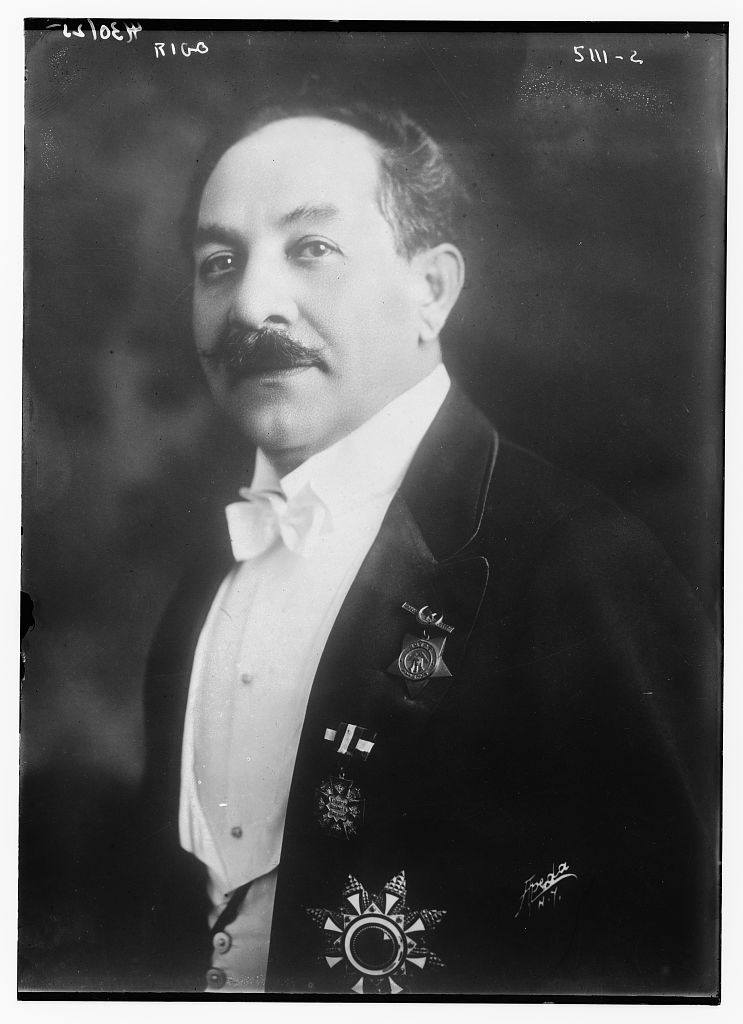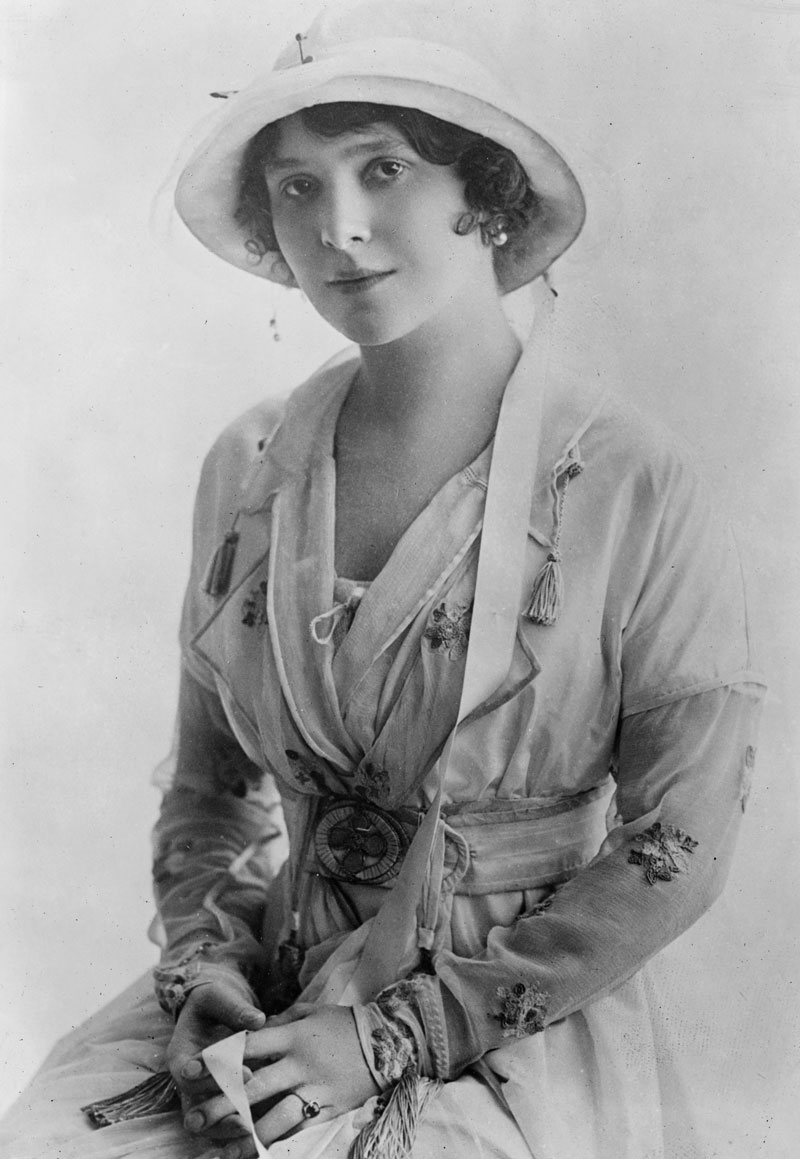I threw a picnic in our garden the other day. We were busy with all…
The Hungarian mystery of Maidenhead
A year ago I wrote a post about Maidenhead, in which I mentioned that there was a club called ‘Hungaria River Club’ in the Bridge Gardens next to the Maidenhead bridge. I wondered then and have been wondering since why that establishment was called ‘Hungaria’ and whether it had any connections with my country, Hungary. Well, my Hungarian guests who visited us beginning of May triggered my new investigation and I am happy to say, I think I resolved the mystery.
Hungarian restaurants in London
The story begins in London where – to my greatest surprise – two Hungarian restaurants existed before the Second World War, meaning that the ‘Gay Hussar’ which opened in 1953 and sadly closed in 2018 was not the first ever Hungarian restaurant in the British capitol. These two were the ‘Hungarian Csarda’ at 77 Dean Street and the ‘Hungaria’ in Lower Regent Street. Unfortunately, I do not know anything about the Hungarian Csarda other than ‘it was still be able to serve goulash during the war in-spite of the paprika shortage, albeit the paprika was a bit pale.’ About the ‘Hungaria’ however, I managed to find out quite a lot and it has quite a fascinating story.
The key figure: Joseph Vecci
Joseph Vecchi was a key figure in the Hungaria’s history. He was born in a small village close to Bologna, Italy and he had a big dream: he wanted to become a restaurant or hotel manager. He started his career in Nice and started at the very bottom, meaning he washed glasses and peeled potatoes. After a few months, he started to climb the ladder and became a Commis de Rang. The big opportunity presented itself in 1906 when Vecchi took a position at Claridge’s in London where his hard work paid off and within six months he became a Floor Waiter. Do not forget, entertaining and serving was still highly regarded as these employees dealt with royals, aristocrats and famous artist and politicians. In 1910, it seemed as if half of the world had visited London and that was because of the funeral of King Edward VII and a year later the coronation of King George V. Count and Countess Károlyi (Hungarian politician) also stayed at Claridges. Interestingly, the best hotels and restaurants were managed by Italians those days. So was Claridges, it was run by Monsieur Branchini who became Vecchi’s mentor.

Vecchi continued his career in Berlin at the Kaiserhof Hotel which used to be favoured by Kaiser William II. If nothing else, he could learn the German precision from first hand, but Vecchi thought the German politeness was based on lineage and the tone of voice in which a princess was addressed varied from the one in which a baroness would be spoken to.
From Berlin Vecchi went to St Petersburg to work at the Hotel Astoria’s French restaurant. Do not forget, these were still tsarian years in Russia when everything was still different and Russia was as popular among aristocracy as France or Italy. I would not like to go deep into the years he spent thereand later in Kiev, although that would be worth it as well. Instead, let’s take a leap forward in time.
The Hungaria in London
He returned to London on 15th February 1920, most of his fortune lost and soon after he was approached by a wealthy cotton manufacturer, Mr Henry Chanok whether he was interested in opening a Hungarian restaurant in London. The commission came from the Hungarian Government. Now you could ask the question why on earth would the Hungarian Government want to open a restaurant in London. The answer is simpler than we think: in 1918-1921, right after the Great War the Hungarian Government was keen to reduce Russian and German influence and build stronger relationships with England and Italy. Possibly, the idea of the ‘Hungaria’ was part of this strategy.

The Hungarian Government was to pay the rent of the premises, the equipment, decoration, furniture, linen and plates on condition the restaurant paid for the carpeting, kitchen equipment and installation, but more importantly, the restaurant had to buy wine from the Hungarian State Wine Cellars. The restaurant was not allowed to sell French or German wine with the exception of French champagne and they could serve English drinks. The negotiations lasted quite long, until 1928.
The restaurant was designed by a Hungarian architect, Mihály Dengler who apparently had a bad command of English and on top of that he was stubborn and as a result it was difficult to agree on arrangements. Vecchi went to Budapest to select the wine and he went to Budafok where he also chose Tokayers from the best vintage years: 1866, 1875 and 1889 from which His Majesty King George V ordered 2 bottles of the year 1889. One thing was still to be done: engage a Hungarian musician. Vecchi knew exactly who he wanted, somebody who he had met in Russia before: Jancsi Rigó. (A traditional cube-shaped chocolate sponge cake with chocolate cream was named after the musician and the cake is equalli called Rigó Jancsi.) He managed to find him and Rigó agreed to go to London.

The opening
The invitations were sent out by the diplomat Baron Iván Rubidó-Zichy and the Hungaria was opened on 8th October 1928. Among the guests were artists, the crème de la crème of London, featuring with Lord and Lady Londonderry and the famous Hungarian singer, Sári Petráss whose performance was followed by a tremendous applause. (Sári Petráss had a miserable death two years later when she was driven in a locked car in Ostend. The driver missed the pier and the car fell into the water and sank.)

The Hungaria was a success.
Perhaps because it was so different to the other restaurants in London and well known for its bohemian atmosphere. How much it could keep its Hungarian nature, I am not too sure and it appears to be rather a Russian restaurant due to Vecchi’s passion for Russian food and Russia. He even arranged a Russian New Year’s party (13th January) in 1933 where 80 percent of the guests were Russians. But it was not only Russian dishes served at the Hungaria: spaghetti was a favourite by many, such as the councillor of the Hungarian Embassy, László Bárdossy.
Besides Russians, the Prince of Wales was a big fan of the Hungaria and had many parties held there, the Duke and Duchess of York were also frequent visitors. On one occasion the famous tenor, Richard Tauber and the Hungarian composer, Ferenc Lehár dined at the Hungaria. When Rigó started to play Tauber’s favourite tune (You Are My Heart’s Delight), Tauber sang the song and the applause broke out like a storm when he finished.
A new, American phenomenon: the roadhouse
So the restaurant was doing well, yet the weekends were quiet. Guests spent their weekends either by the sea or by the river. At the end of the 1920s and in the 1930s America’s influence on British culture was immense and it was triggered mainly by Hollywood films. At the end of the twenties the so called roadhouse appeared in England as well, which were built by main roads just like in America. The phenomenon had its widest appeal in between 1933-1937. As motorcars were spread more and more and people became more mobile, they were happy to take drives in the countryside and get a break from the City. The roadhouse offered entertainment in luxury surroundings: it had a bar, dance floors, live music, swimming pool, restaurant and often offered some sort of gambling. The forerunner of the roadhouse in Britain was the river club. Based on the success of the Hungaria, Vecchi and his patrons decided to open the Hungaria River Club in Maidenhead.

The English version: the River Club
The Hungaria River Club was not the first club in town: the Murray’s River Club opened in 1913 and was famous for its illuminated glass dance floors and the cocaine… Oh yes, the Bright Young Things were quite self-destructive and this elite group had an extensive drug use.

The Hungaria River Club failed
As the Murray’s was located at the same spot as the Hungaria River Club and a short film from 1933 shows the latter with illuminated glass dancefloor, I presume, Vecchi took over the management of the Murray’s and he called it Hungaria River Club. (Reputedly, the owner of the Murray’s, Jack May from New York was some sort of a gangster and drug-dealer and was removed from the nightlife scene in 1930. Maybe this is when Vecchi stepped in.) The Hungaria River Club had an outdoor swimming pool and the indoor dancefloor looked like a mock-parisian street.

The Prince of Wales had several parties at the Hungaria River Club as well and it was a brilliant advert for the place. It appeared the river club would be a success as well, but it was not and in the end it failed. Perhaps it was too far out from London, or the trouble was it was opened right before the Great Depression.
The Hungaria was adjusted to the needs during the war
While the river club didn’t make it, the restaurant in London was still doing extremely well even during the Second World War. The restaurant was moved to the Grillroom which had thick concrete walls and as such it naturally became an air raid shelter. The steel doors were gas-proof as well as bomb- and splinter-proof which secured up to 800 hours stay without suffocating. Vecchi offered his guests to stay for the night if they did not want to risk a dangerous journey home. The offer went down very well and Vecchi could have filled the Hungaria five times over each night.
~
The Hungaria came under new management in 1943 and I do not know anything about the years after, unfortunately. One thing is for sure: my heart was filled with warmth and pride as I was reading the story of the Hungaria. It is still unbelievable that Maidenhead has relations to Hungary one way or the other. I guess, from now onwards, I will always think of the Hungaria River Club and the Hungaria, whenever I pass by the Bridge Gardens…




Comments (0)